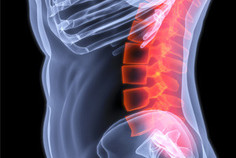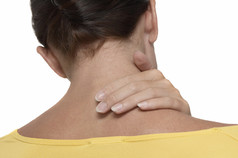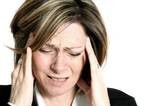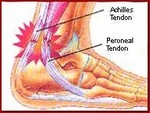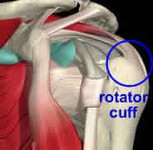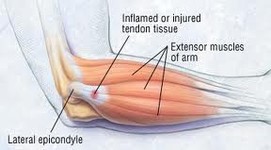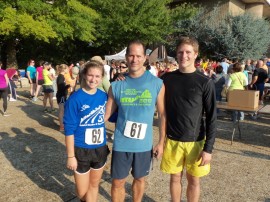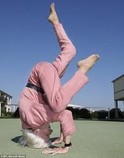
Where to Find Us:
Appalachian Chiropractic Wellness Center
359 Commonwealth Ave
Bristol, VA 24201
Phone: 276 669-0969
Email acwc1@bvu.net
Conditions
-
Back Pain
-
Sciatic/Leg Pain
-
Neck Pain
-
Arm Pain or Numbness
-
Headaches
-
Tendonitis
-
Joint Stiffness
-
Hip Pain
-
Leg Pain
-
Shoulder Pain
-
Elbow Pain
-
Wrist Pain
-
Athletic Injuries
-
Auto Injuries
-
Work Injuries
google2f3a55d1e368214d.html
Conditions We Treat
Low Back Pain and Sciatica
Low Back Pain
Understanding the cause of your back pain is the key to proper treatment. There are many different underlying conditions that cause back pain. The more common causes of back pain are described below. Don't try to make your own diagnosis. A trained chiropractor that deals with back pain complaints on a daily basis will know what to look for and what questions to ask you to determine the underlying cause.
- Muscle strains and muscle spasms are the most common cause of low back pain. Patients may or may not remember the initial event that triggered their muscle spasm. Back pain from muscle spasms can be incredibly painful and feel like nerve pain when the muscle tighten and twitch around a key nerve such as the sciatic nerve.
- A ruptured intervertebral disc, also called a herniated disc, is another common cause of back pain. The terms ruptured, herniated, slipped and bulging disc don't really have precise definitions to distinguish one from another and are often used somewhat interchangeably to describe protruding disc material. It is important to note that a large percent of the population is walking around with bulging discs that cause no symptoms, so not every herniated disc warrants treatment or intervention.
- Discogenic back pain is the result of damage to the intervertabral disc, but without disc herniation. Diagnosis of discogenic back pain may require the use of MRI.
- Spinal stenosis causes a lot of back pain in the elderly.As we age, the spinal canal can become constricted from arthritis and other conditions. If the spinal canal becomes too tight, back pain can be the result.
- Arthritis most commonly affects joints such as the knees and fingers. However, arthritis can affect any joint in the body, including the small joints of the spine. Arthritis of the spine can cause back pain with movement.
- Spondylolisthesis causes back pain because adjacent vertebra become unstable and begin to "slip." The most common cause of spondylolisthesis are degenerative changes causing loss of the normal stabilizing structures of the spinal column.
As stated earlier, backaches are hard to self-diagnose. The causes listed above are just a few of more common possibilities. If you suffer from acute or chronic backaches, consult a qualified chiropractor for a complete exam.
Neck Pain and Shoulder Upper Back Pain
Causes of Neck Pain
There are many causes for neck pain. Some causes result from acute injuries which cannot be avoided, such as an automobile accident resulting in a whiplash-type injury. Other causes can be avoided and result from the use of "bad" or improper habits and techniques, such as poor posture and improper lifting. These "other causes" make up the majority of neck pain causes and can be effectively treated once the cause(s) is/are identified and the appropriate measures to avoid these "bad" and improper habits and techniques are implemented.
Some of the more common causes of neck pain include:
- incomplete rehabilitation of past injuries
- lack of proper and periodic spinal alignments
- presence of cervical spine subluxations
- whiplash-type injuries
- improper workstation setup
- poor posture
- prolonged sitting
- prolonged use of non-ergonomically designed equipment
- excessive repetitive neck motions
- improper telephone techniques
- excessive mental stress
- physical inactivity
- poor diet and nutritional practices
Treatments for Neck Pain
Doctors of chiropractic have long known that the most successful treatments involve the identification and correction of the underlying causes of the condition. That's why chiropractic care has been so successful in the correction of back and neck conditions and the number one choice for back and neck care.
The chiropractic treatments for neck pain incorporate the use of many therapies, all of which are gentle, safe, natural and noninvasive. However, the true power of chiropractic care is found in the chiropractic adjustment - the most effective and essential treatment employed by the chiropractor. The reason? Quite simply, the spinal adjustment corrects the major problems that the majority of neck pain sufferers have.
Most individuals experiencing neck pain have either:
- suffered an acute accident such as whiplash, where the structural integrity of the neck has been altered and tissue damage has occurred, or
- been exposed to long period of adverse neck and spinal stresses most commonly from bad or improper postural habits and techniques.
In both cases, the spinal components are almost always structurally misaligned and biomechanically faulty. In other words, the vertebrae and their supporting structures have lost their "optimal" positioning and their movements are occurring in an inappropriate and stressful manner. The only effective and long-term way to correct the structural malpositions and improper biomechanics is to realign the spinal segments and restore normalize motion. This is the job of the spinal adjustment. In addition to restoring positioning and motion, the spinal adjustment also produces a reflexive relief of pain and reduction in muscle spasm. This is due to the high number of mechanoreceptors in the joints of the vertebrae which are stimulated through the chiropractic adjustment. Research has shown that stimulation of these mechanoreceptors sends signals to the brain which shutdown pain signals and result in muscle relaxation. Also, the adjustment helps to eliminate inflammation through the introduction of motion; inflammatory chemicals are known irritates to pain fibers.
The chiropractic treatments for neck pain incorporate the use of many therapies, all of which are gentle, safe, natural and noninvasive. However, the true power of chiropractic care is found in the chiropractic adjustment - the most effective and essential treatment employed by the chiropractor. The reason? Quite simply, the spinal adjustment corrects the major problems that the majority of neck pain sufferers have.
Most individuals experiencing neck pain have either:
- suffered an acute accident such as whiplash, where the structural integrity of the neck has been altered and tissue damage has occurred, or
- been exposed to long period of adverse neck and spinal stresses most commonly from bad or improper postural habits and techniques.
In both cases, the spinal components are almost always structurally misaligned and biomechanically faulty. In other words, the vertebrae and their supporting structures have lost their "optimal" positioning and their movements are occurring in an inappropriate and stressful manner. The only effective and long-term way to correct the structural malpositions and improper biomechanics is to realign the spinal segments and restore normalize motion. This is the job of the spinal adjustment. In addition to restoring positioning and motion, the spinal adjustment also produces a reflexive relief of pain and reduction in muscle spasm. This is due to the high number of mechanoreceptors in the joints of the vertebrae which are stimulated through the chiropractic adjustment. Research has shown that stimulation of these mechanoreceptors sends signals to the brain which shutdown pain signals and result in muscle relaxation. Also, the adjustment helps to eliminate inflammation through the introduction of motion; inflammatory chemicals are known irritates to pain fibers.
Other Therapies
 Other manual
therapies such as massage, trigger point therapy, proprioceptive neuromuscular facilitation, and acupressure therapy may be utilized to assist in the relaxation of cervical muscles and increase
cervical spine mobility.
Other manual
therapies such as massage, trigger point therapy, proprioceptive neuromuscular facilitation, and acupressure therapy may be utilized to assist in the relaxation of cervical muscles and increase
cervical spine mobility.
Therapeutic exercises and stretches which assist in the restoration of proper cervical motion and increase cervical muscle strength and coordination are commonly prescribed. Exercises and stretches are unique in that they can be performed outside the office without the assistance of the doctor.
Physical therapies commonly used by physical therapists may also be employed and include hot and cold applications, muscle stimulation, interferential therapy, therapeutic ultrasound, and diathermy.
Headaches
According to the latest research, 9% of men and 12% of women in the U.S. experience at least 1-2 headache episodes per month. And, more than 4% of the U.S. population suffers from frequent headaches, defined as headaches that occur at least 180 days a year. Needless to say, headaches have become a social and economic burden in the United States, as well as other parts of the world.
Scientists have identified over 300 causes for headaches. Various pain-sensitive structures and tissues including the skin, subcutaneous tissue, muscles, arteries, periosteal bone covering, and the upper cervical and facial nerves produce headaches when irritated or injured. Fortunately, only a handful of causes are responsible for the majority of headaches.
The most common of these headaches include:
- Cervicogenic- problems within the neck
- Muscle-tension- neck and upper back muscular spasms
- Post-traumatic- following head/neck trauma, i.e. whiplash
- Drug-induced- from analgesic overuse
- Migraines
- Cluster
Doctors of chiropractic successfully help thousands of individuals everyday obtain safe, effective, long-term relief from their headaches. This is because most headaches have a spinal, muscular, or habitual component which the chiropractor has been trained to identify and treat. In fact, surveys show that 10-25% of patients initiate chiropractic care for the relief of headaches.
Cervicogenic Headaches
 Cervicogenic
headaches refer to headaches which originate from tissues and structures in the cervical spine or neck region. The headache is generally a very constant, strong, yet dull pain. The most common
location of pain is around the orbital (eye) region and upper neck area but may also include other areas of the face, head and neck. The headache will typically last for one to three days and reoccur
ever one to four weeks until properly treated. The headache may also be accompanied by nausea, vomiting, dizziness, ringing of the ears, and sensitivity to light and sound - similar to migraine
headaches.
Cervicogenic
headaches refer to headaches which originate from tissues and structures in the cervical spine or neck region. The headache is generally a very constant, strong, yet dull pain. The most common
location of pain is around the orbital (eye) region and upper neck area but may also include other areas of the face, head and neck. The headache will typically last for one to three days and reoccur
ever one to four weeks until properly treated. The headache may also be accompanied by nausea, vomiting, dizziness, ringing of the ears, and sensitivity to light and sound - similar to migraine
headaches.
Cervicogenic headaches are caused by irritation or injury to the structures of the upper neck region, resulting in local neck pain as well as referred pain to the temporal and facial regions. This headache is often precipitated or aggravated by head and neck movements and by applying deep pressure to the muscles of the upper cervical area.
Chiropractic management of cervicogenic headaches is the best way to eliminate these headaches. Without addressing the problems in cervical spine the headache will continue to persist and worsen. Individuals should be warned that relying on analgesics to remedy cervicogenic headaches does nothing to correct the cause of the headache and may worsen the headache in what's known as the "rebound effect".
Muscle Tension Headaches
 Tension headaches are
the most common headache type, representing approximately 60% of all headaches. These headaches are caused by the sustained contraction of the muscles in the neck and head region. The sustained
muscle contraction is usually a result of a combination of the following:
Tension headaches are
the most common headache type, representing approximately 60% of all headaches. These headaches are caused by the sustained contraction of the muscles in the neck and head region. The sustained
muscle contraction is usually a result of a combination of the following:
- cervical/neck misalignments and faulty neck biomechanics
- previous neck/upper back injury- not properly rehabilitated
- poor posture
- Excessive emotional stress
- anxiety or depression
- prolonged sitting or driving
- improper sleeping habits
Characteristically, these headaches are generally mild to moderate in intensity and can last from hours to days. There is a constant tight or pressure sensation, generally feeling like a tight band is wrapping around the head. There is commonly pain and tightness in the area of the neck and shoulder. Pain generally starts in the base of the skull or temporal regions of the head and spreads outwards to affect other areas of the head and neck.
Chiropractors have great success treating muscle tension headaches. By utilizing spinal adjustments, therapeutic exercises and stretches, soft tissue techniques such
as trigger point work and massage, and by counseling on lifestyle modification, tension headaches can become a thing of the past. Individuals should be warned that relying on analgesics to remedy
tension headaches does nothing to correct the cause of the headache and may worsen the headache in what's known as the "rebound effect".
Post-Traumatic Headaches
 Post-traumatic
headaches are headaches initiated from head or neck injury, such as in a whiplash-type injury or blow to the head. The resulting headache varies from person to person. Most commonly, the resulting
post-traumatic headache is one of the following:
Post-traumatic
headaches are headaches initiated from head or neck injury, such as in a whiplash-type injury or blow to the head. The resulting headache varies from person to person. Most commonly, the resulting
post-traumatic headache is one of the following:
- post-traumatic cervicogenic headache
- post-traumatic muscle tension headache
- post-traumatic migraine headache
- post-traumatic cluster headache
- post-traumatic vascular headache
The most favorable outcomes are seen with those who seek early treatment. It's also important immediately following any head trauma to rule out subdural hematoma, a potentially fatal condition caused by intracranial bleeding. Chiropractors frequently treat post-traumatic headaches and do so with success.
Migraine Headaches
 Migraines account for
approximately 10% of all headaches. Researchers have found that 3.4 million females and 1.1 million males suffer from 1 migraine attack per month. Migraines follow a hereditary course, with 70% of
migraine sufferers having other family members who are also affected. Migraine headaches often have coexisting muscle tension and cervicogenic factors which contribute to the frequency and intensity
of migraine attacks.
Migraines account for
approximately 10% of all headaches. Researchers have found that 3.4 million females and 1.1 million males suffer from 1 migraine attack per month. Migraines follow a hereditary course, with 70% of
migraine sufferers having other family members who are also affected. Migraine headaches often have coexisting muscle tension and cervicogenic factors which contribute to the frequency and intensity
of migraine attacks.
The pain generated by migraines has a throbbing quality and usually involves one side of the head initially. The headache tends to reach its peak intensity after about 30 minutes. Migraines are commonly accompanied by nausea and vomiting. During severe attacks, sensitivity to sound and light may occur forcing the individual to seek a dark and quiet room mandatory. The duration of the headache can vary from a few hours to 1 to 2 days.
Migraine headaches are categorized into either "common" or "classical" migraines.
Classical Migraines differ from common migraines in that the actual headache is preceded by neurologic disturbances which indicate a migraine attack is about to take place. These include alterations in the visual field (zigzag lines, blind spots, etc.), numbness or tingling of the lips or hand, problems with balance and even loss of consciousness. These neurologic disturbances generally last 15 to 30 minutes and resolve before the headache begins. In some cases, the neurologic disturbances may persist several days after the headache has resolved.
Clinical trials conducted on chiropractic's effectiveness in the management of migraine headaches have shown remarkable improvement in many cases.
Tendonitis
Tendonitis is a common condition which involves inflammation of a tendon, the connective tissue that attaches a muscle to a bone. Common places for this to occur are the achilles (back of the ankle), the shoulder, the knee, and the elbow. Tendonitis is considered to be an overuse condition related to repetitive motion and is therefore often caused by sports and work related tasks. Common home remedies for tendonitis include rest, ice, and light, pain-free stretching. For tendonitis this is often effective if the offending activity is discontinued for 1-3 weeks and if the condition is caught early.
Current research has shown that many conditions thought to be tendonitis are in fact a different condition known as tendinosis. Tendinosis is a condition that is not inflammatory in nature and is instead a degenerative change in the tendon itself which includes a build up of collagen or scar tissue. A tendonitis can become a tendinosis if symptoms are ignored early in the process. One important distinction between tendonitis and tendinosis is the fact that tendinoses are unlikely to respond to rest. Even if the symptoms dissipate with rest they are likely to come back when you resume the activity that caused them in the first place. For this reason, a person who has had symptoms for more than a 2-3 week period should seek care to prevent the problem from becoming chronic.
Treatment in our office starts with identifying the cause. Once the causitive factors are identified we can discuss alternative motion patterns for the activity involved to avoid continued aggravation of the area. Treatment then begins with gentle massage and stretching and progresses to deep tendon massage, transverse friction massage and/or active release of the tendon and muscle involved. When appropriate, taping, supports or bracing are also used.
Athletic Injuries
One of Dr Crums passions in Chiropractic is the application of his techiniques with athletes. It was in his childhood as an athlete that he first was helped with chiropractic and came to realize what an advantage chiropractic care can become for athletes. Dr. Crum continues to stay healthy through sports and exercise and practices what he attempts to teach his athletic patients.
Scott Simmons story is similar to other athletic teams as well as indiviual athletes. Dr Crum has treated athletes from a wide variety of sports including: Wrestling, Dance, Softball, Football, Golf, Karate, Bowling, Baseball, Basketball, Volleyball, Moto-cross, and of course Running.
Chiropractic care has received much attention in regards to its successful management of sporting injuries. Since the majority of sports injuries are soft tissue in nature and because many of injuries arise from improper body biomechanics and improper sporting techniques, chiropractic doctors have become the doctors of choice - from the weekend warrior to the professional athlete.
According to an article in the June '98 issue of The Physician and Sports Medicine, "Interest in alternative or complementary medicine 'especially chiropractic' is booming... active patients are running to unconventional providers to treat their aches and pains... from chiropractors and acupuncture to magnets and meditation."
It's really quite simple. Chiropractic care - through the use of safe and natural spinal adjustive techniques, physical therapy applications, soft tissue mobilization, stretching and exercise programs, diet and nutritional counseling, and extensive biomechanical training - focuses on all causes which have lead to the symptoms of pain and tissue injury and do not focus on solely eliminating pain.
Successful treatments must focus not only on pain relief, but must address the underlying causes such as muscular imbalances, biomechanical deficiencies, improper sporting techniques, and improper conditioning, to name a few.
It's Never Too Late To Exercise
New research shows that if you've reached middle age or have long since passed it, it's still not too late to exercise. According to researchers from the Royal Free Hospital School of Medicine in London, maintaining exercise habits or initiating light to moderate physical activity later in life reduces overall mortality risk as well as lowers the risk of heart attack in older men - including those with existing cardiovascular disease.
The researchers reviewed data collected from middle-aged men who were part of a large study looking at cardiovascular disease. The men answered questionnaires about their health and exercise habits, first in the late 1970s and again in the early 1990s. The 7,735 men who answered the first questionnaire were 40 to 59 years old. Nearly 6,000 participated in the second questionnaire. Their average age at that time was 63. These men were followed for an additional 4 years
Men who described themselves as inactive or occasionally active in the first questionnaire but who had begun "at least light activity" by the time of the second questionnaire reduced their risk of death by about 45%. Even men with preexisting cardiovascular disease appeared to benefit from exercising. Regular moderate exercise seems to confer the greatest benefit. Light physical activities included walking, gardening, swimming, and cycling.
More vigorous activities, such as participating in sports, "do not appear to give any additional benefit to health for older men, and our findings suggest that frequent light physical activity may be more appropriate," the authors write.
For older men, and, presumably, older women as well, "encouragement... to increase their physical activity gradually and regularly would help to maintain mobility, to prolong independence, and to reduce the risk of heart attacks and mortality," say the researchers.
- The Lancet 1998;351:1603-1608.
Dr Crum works to customize all exercise perscriptions and activity encouragement to the age and condition of the patient. He firmly believes that everyone is capable of some form of physical activity to improve their heatlh and his patients are living proof. He see's a wide cross-section of ages from 3 to 93.


